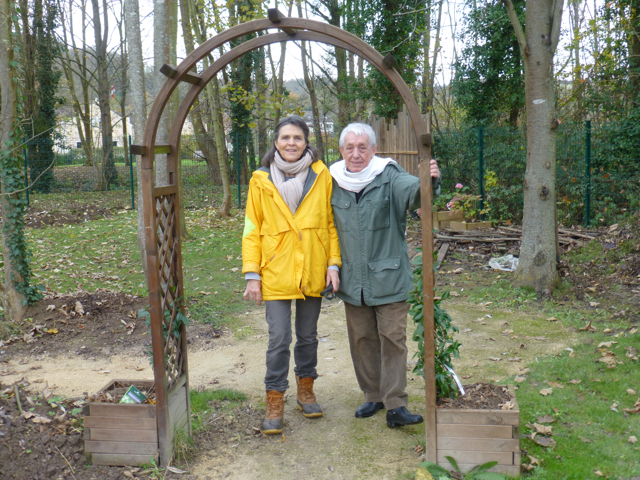 I’m struggling a bit - my french doesn’t go beyond ordering a cuppa and Wiki translation is not helping. I’m leafing through a document that is headed: “La Maison des Aulnes, residence d’accueil pour personnes cerebrolesees”. The computer throws up nonsense in translation. The gist is obvious so, tear up the paperwork, and let me tell you about the remarkable jardin de soin in Maule, just outside Paris.
I’m struggling a bit - my french doesn’t go beyond ordering a cuppa and Wiki translation is not helping. I’m leafing through a document that is headed: “La Maison des Aulnes, residence d’accueil pour personnes cerebrolesees”. The computer throws up nonsense in translation. The gist is obvious so, tear up the paperwork, and let me tell you about the remarkable jardin de soin in Maule, just outside Paris.
This place is lived in by selection of people who have had suffered brain injury. Imagine for a moment being very old with death around the corner. “ So where is the opportunity for pleasure? There will be no sex, no good night’s sleep. Try to imagine what enjoyment you can bring. This is the job of the therapist. Follow the orientation of the sun, for instance, this can help someone lost in dementia.” Jean Paul and Anne Ribes and their massive bouncy dog have brought us here to see the project of the Epi Cure garden. Anne is a trained nurse and garden designer and has a mission to the suffering. It was about 15 years ago that she persuaded the management at la Pitie-Salpetriere to give her empty spaces on the hospital campus to make gardens to heal suffering.
Also on my desk is her book “Toucher la Terre: jardiner avec ceux qui souffrent”. The sense jumps the language barrier and I grasp the idea of a jardin de soin. Soin means care. Both Jean Paul are buddhists and adherents to the theory of biophilia explored in Edward O. Wilson’s eponymous book. To strip it to simplicity it is love of nature. The objective of Epi Cure is to rediscover the contact with nature and oneself, to be outside, in the sun, the wind and sometimes the rain. To touch the earth and to turn the cared into the carer. It goes way beyond the plants - when the project was born (thanks to a generous donation from the Fondation Georges Truffaut) 3 years ago the Ribes found the occupants of Les Aulnes feeling as if they were living in a prison.
Personal relationships were merely fuelled by pain and one resident had become a recluse in his own bedroom. Not all the people of that community join in with the gardening but they are proud of the space and the ownership. At the bottom of the garden, a metal fence gives on to a footpath. “We used to come down here and look at the people out there and wonder what they were doing. Now they come and look through the fence and have a look at what we are up to”. Lessons are three workshops a week with a polytunnel to retreat into for the bad weather. Part of the sessions include plant buying trips and outings to other gardens.
On our morning visit one of Anne’s pupils came out for a chat. Earlier that day he had sworn at his nurse and stormed off. “Then what did you do?” “I went back and apologised”. “Gardening with people is a sweet revolution” said Jean Paul. The Epi Cure garden has changed the atmosphere dramatically. “We must be more peaceful and care for each other”. I like this philosophy but I am told that the movement of Gardens of Care is in an experimental stage and that Anne’s book, published in 2006, is out of date.... oh dear, and by the time I laboriously pick my way through the pages, many more moons will have waned. Behind the teaching of horticultural skills lies a deep vein of respect. Metta Bahvana, or loving kindness, if you will. That short encounter with des Aulnes and its people was moving beyond tell and I regret so few pics but snapping with a camera is intrusive.
